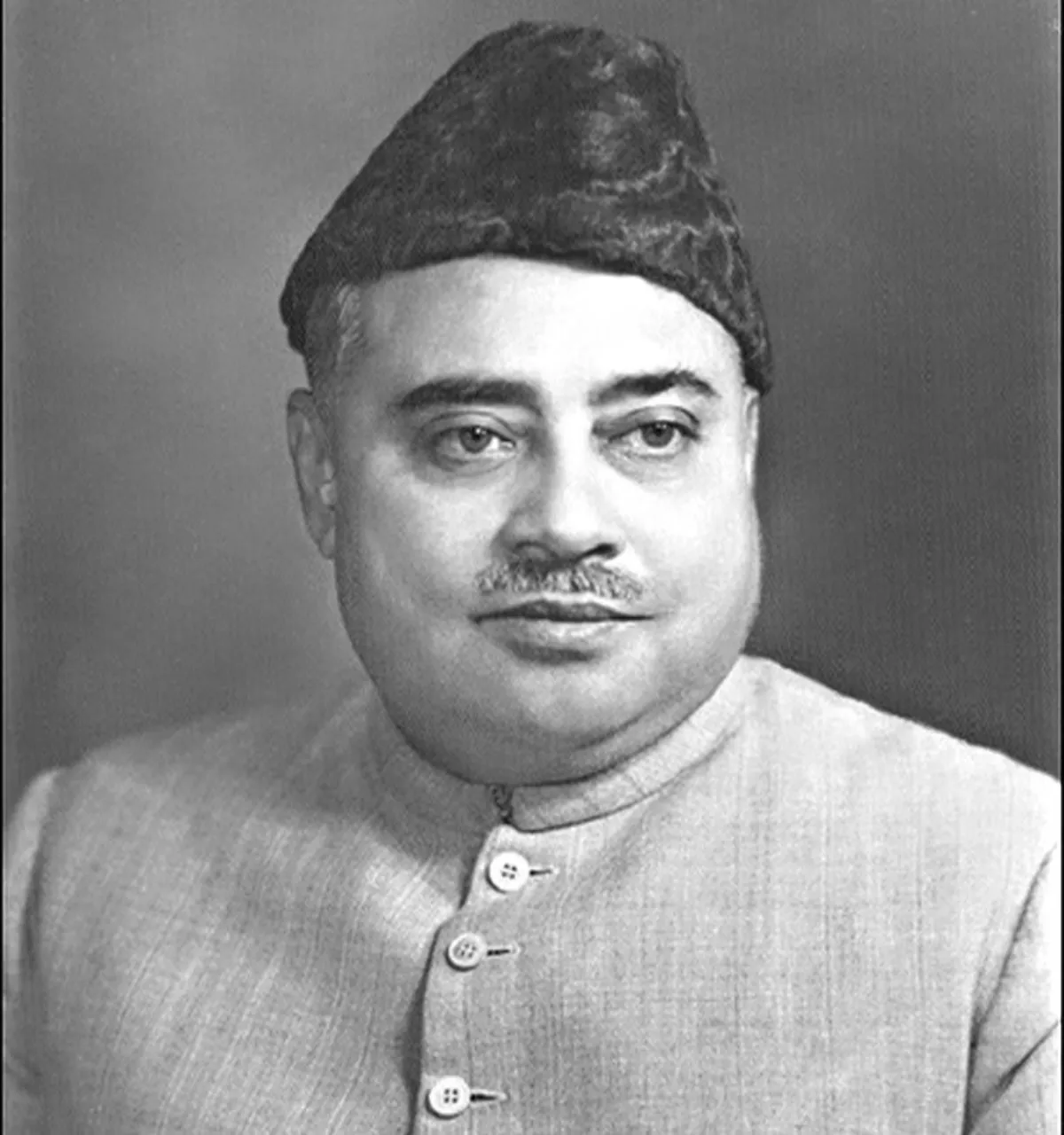 1.
1. Khawaja Nazimuddin served as Prime Minister of Bengal in British India from 1943 to 1945, and later as the 1st Chief Minister of East Bengal in independent Pakistan.

 1.
1. Khawaja Nazimuddin served as Prime Minister of Bengal in British India from 1943 to 1945, and later as the 1st Chief Minister of East Bengal in independent Pakistan.
Khawaja Nazimuddin's term was marked by constant power struggles with his own successor as Governor-General, Ghulam Muhammad, as law and order deteriorated amid the rise of the Bengali language movement and protests in his native Dhaka in 1952, and religious riots in Lahore a year later.
Khawaja Nazimuddin's ministry was the first federal government to be dismissed in Pakistan's history, though his former ministers, Sardar Abdur Rab Nishtar, Abdul Sattar Pirzada, and Mahmud Husain refused to take the oath of office in the new cabinet.
Khawaja Nazimuddin retired from national politics, dying after a brief illness in 1964.
Khawaja Nazimuddin is buried at the Mausoleum of Three Leaders in Dhaka.
Khawaja Nazimuddin was one of the leading founding fathers of Pakistan and the first Bengali to have governed Pakistan.
Khawaja Nazimuddin was born into a wealthy Muslim family of the Nawabs of Dhaka on 19 July 1894, then under British Raj rule.
Khawaja Nazimuddin's father was Khwaja Nizamuddin and his paternal grandfather was Khwaja Fakhruddin.
Khawaja Nazimuddin's family hailed from Kashmir and was long settled in Dhaka.
Khawaja Nazimuddin was the maternal grandson of Nawab Bahadur Sir Khwaja Ahsanullah and his mother, Nawabzadi Bilqis Banu, notable for her own statue.
Khawaja Nazimuddin had a younger brother, Khwaja Shahabuddin, who would later play a vital role in Pakistani politics.
Khawaja Nazimuddin secured his graduation with a bachelor's degree in sociology from AMU and returned to England to pursue higher education.
Khawaja Nazimuddin attended Trinity Hall in the University of Cambridge, and earned a Master of Arts.
Khawaja Nazimuddin returned to India to join his brother Khwaja Shahbuddin from England, taking an interest in civil and public affairs that led him to join the Bengali politics.
Khawaja Nazimuddin participated in regional elections held in 1937 on a Muslim League's platform but conceded his defeat in favour of Fazlul Haq of Krishak Praja Party who was appointed as Prime Minister of Bengal, while assuming his personal role as member of the legislative assembly.
In 1941, Khawaja Nazimuddin broke away from the coalition led by Premier Fazlul Haq and decided to become a leader of the opposition, leading campaign against Haq's premiership and primarily focused on Bengali nationalism issues.
In 1943, Khawaja Nazimuddin took over the government from Premier Haq when the latter was dismissed by the Governor, John Herbert, amid controversies surrounding in his political campaigns.
Khawaja Nazimuddin's premiership lasted until 1945, when his ministry's appropriation for agriculture was defeated in the assembly by 106 to 97 votes.
From 1945 to 1947, Khawaja Nazimuddin continued to serve as the chairman of the Muslim League in Bengal, ardently supporting the political cause for Pakistan against the Congress Party.
On 14 August of 1947, Governor-General Muhammad Ali Jinnah relinquished the party presidency of the Pakistan Muslim League to Sir Khwaja Khawaja Nazimuddin who took over the party of the President of Pakistan Muslim League, due to his party electoral performance.
In 1949, Governor-General Khawaja Nazimuddin established the parliamentary committee, the Basic Principles Committee, on the advice of Prime Minister Ali Khan to underlying basic principles that would lay the foundation of the Constitution of Pakistan.
Khawaja Nazimuddin appointed Finance Minister Sir Malik Ghulam to the Governor-General's post.
Khawaja Nazimuddin's government focused on promoting the political programs aimed at conservative ideas.
Khawaja Nazimuddin's administration took place during a poor economy and the rise of provincial nationalism in four provinces and East Bengal, which made him unable to run the country's affairs effectively.
Khawaja Nazimuddin was held morally responsible for riots being spread and resisted such pressures; but mass rioting broke out in Punjab against both the government and followers of this religious minority.
Khawaja Nazimuddin forced out the Chief Minister of Punjab, Mumtaz Daultana, and replaced him with Feroz Khan Noon.
Khawaja Nazimuddin refused to oblige, and Malik Ghulam used reserve powers granted in the Government of India Act 1935, dismissed Khawaja Nazimuddin.
Khawaja Nazimuddin then requested the Federal Court of Pakistan's intervention against this action, but the Chief Justice, Muhammad Munir did not rule on the legality of the dismissal, but instead forced new elections to be held in 1954.
Khawaja Nazimuddin was buried in the Mausoleum of three leaders in his hometown of Dhaka.
Khawaja Nazimuddin was appointed a Companion of the Order of the Indian Empire in 1926, and was knighted in the 1934 King's Birthday Honours by the King-Emperor, George V, when he was appointed a Knight Commander of the Order of the Indian Empire.
Later by the Government of Pakistan, Khawaja Nazimuddin has been honoured from time to time after his death.